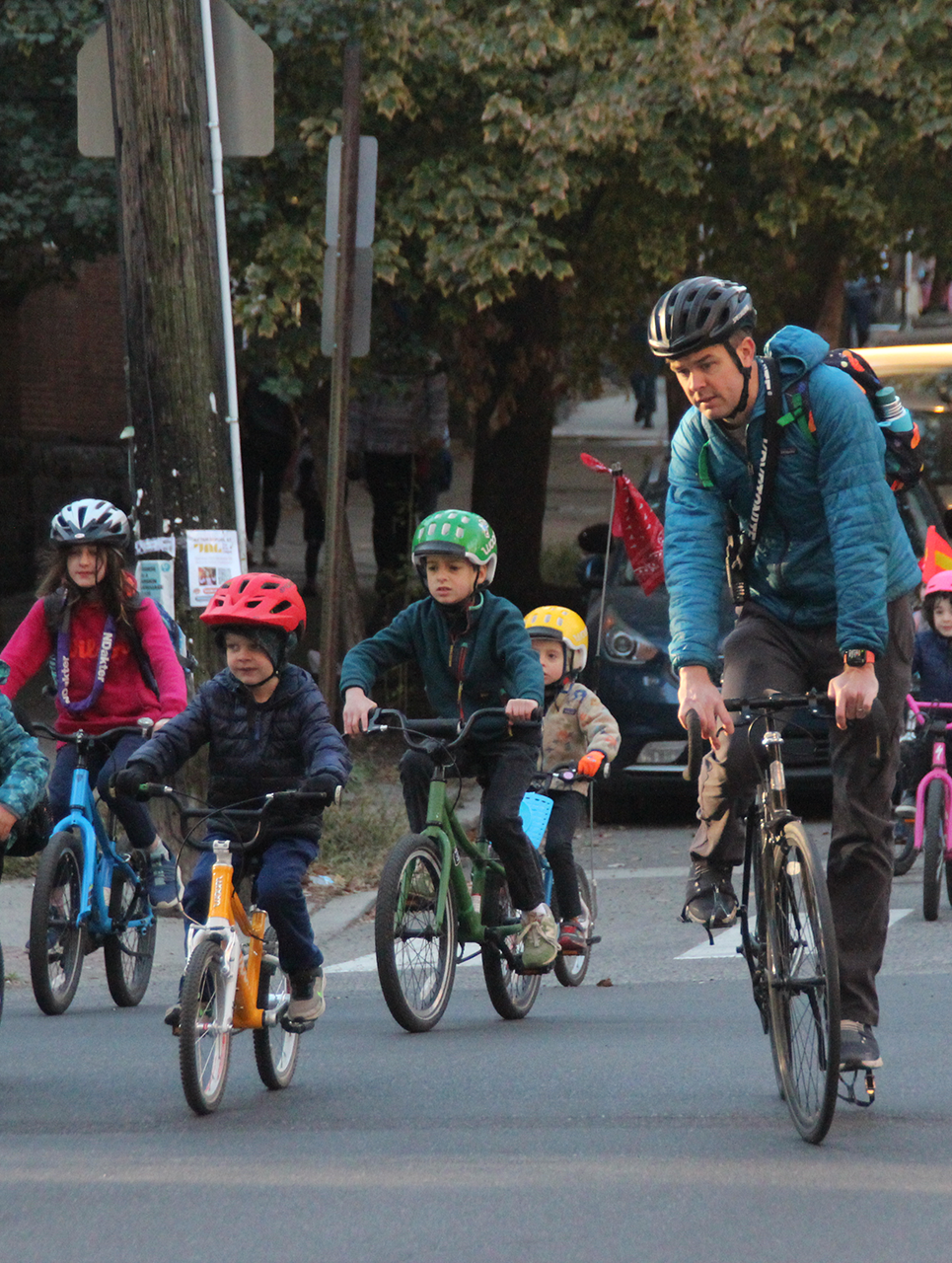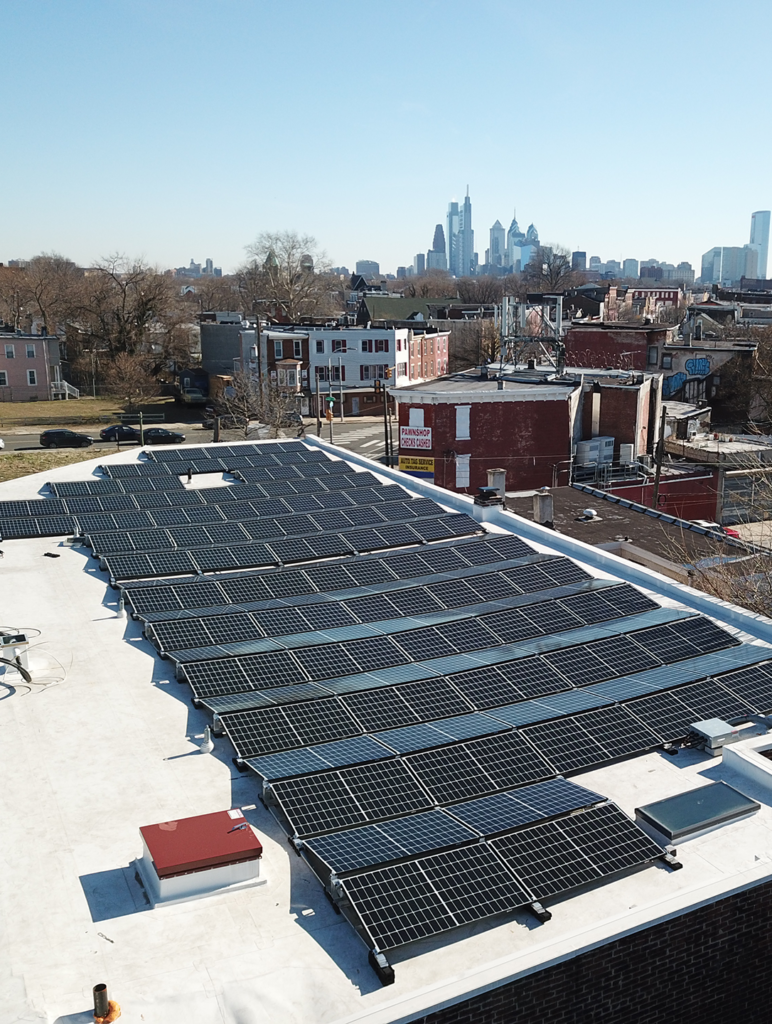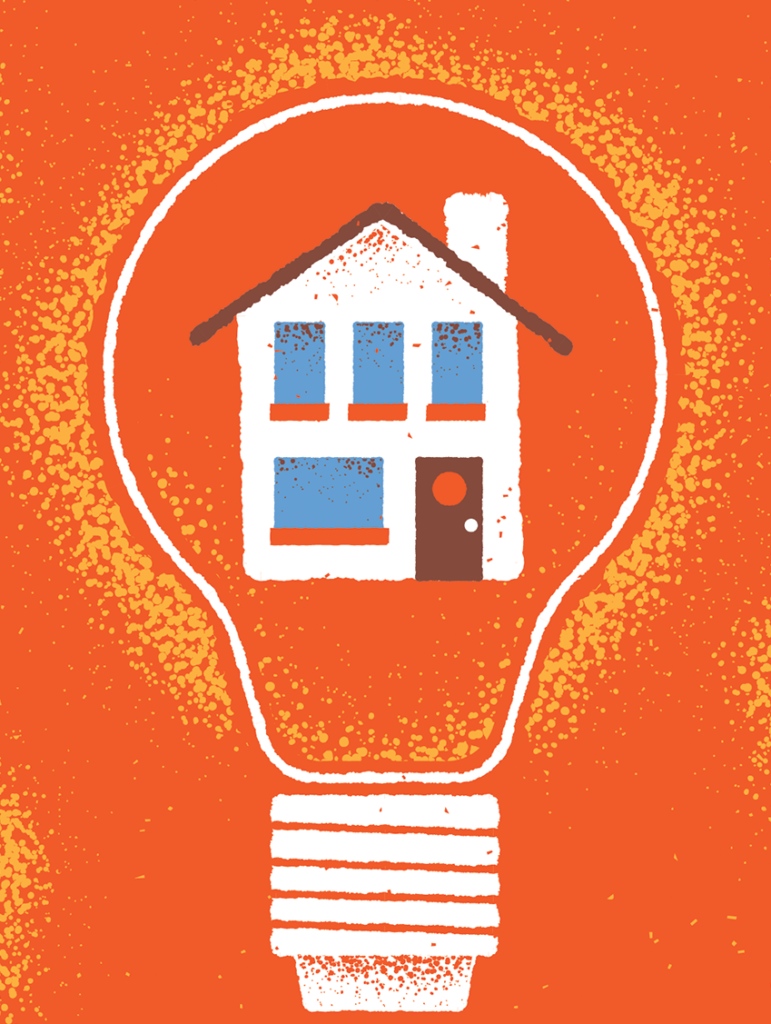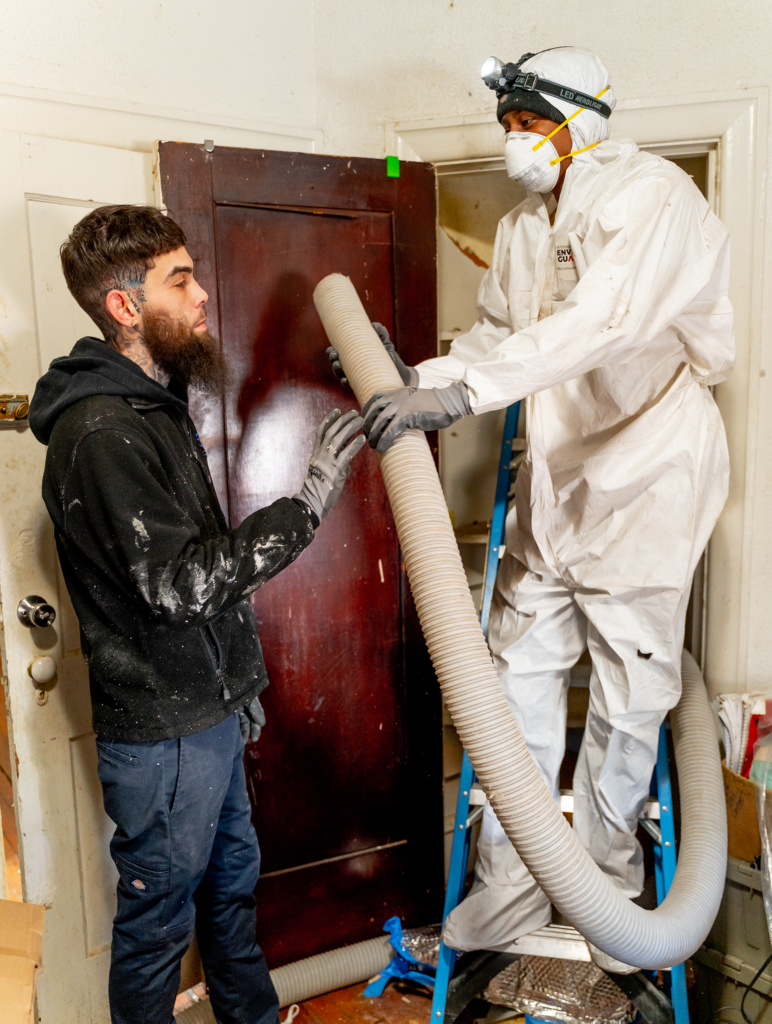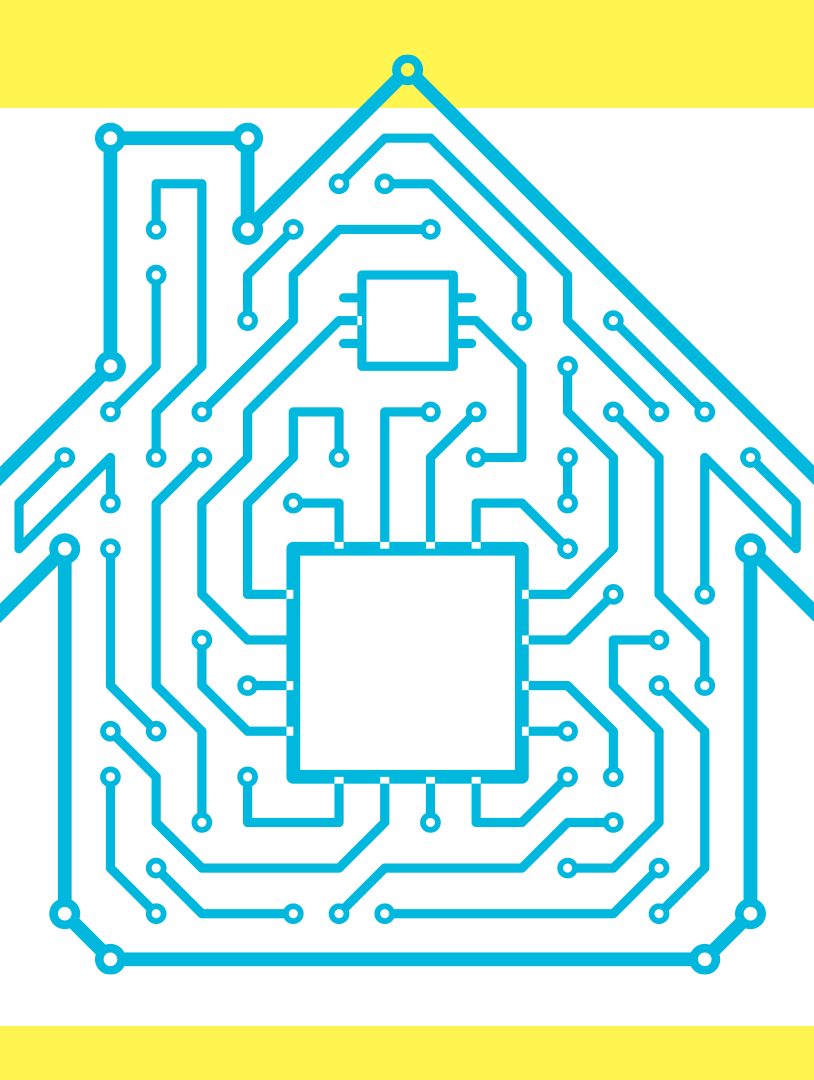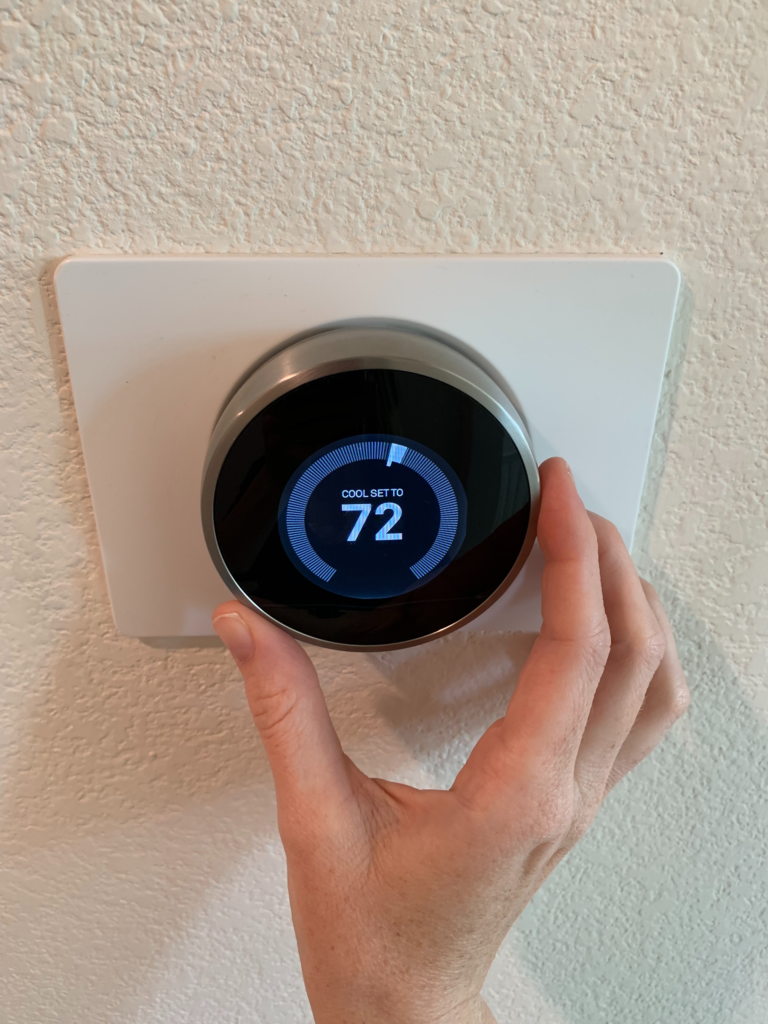It’s a Friday morning in October, and there’s a steady stream of cars driving down 43rd Street in West Philly’s Spruce Hill neighborhood.
Then, through the traffic, a cavalcade emerges of about 20 parents and children on bicycles — a mix of kids on electric cargo bikes, kids on the front of folding bikes, kids on their own bikes. A minute later, they reach the Penn Alexander schoolyard, where helmets are quickly removed, backpacks are slung onto young shoulders and kids disappear into the crowd.
This is no accidental convergence of school bike commuters. The Penn Alexander bike bus is an organized group of parents and students. Weather permitting, they meet every Friday, riding the half-mile or so along a prescribed route to school. Biking as a group, participants attest, makes the ride safer and more fun. It also inspires more students and parents to choose a more active and more sustainable way to get around.
Andrew Ziv, Erin Abrigo and Yoni Brook started the group this year after Brook sent Ziv a video about a bike bus in Portland, Oregon. “Some of us bike to school every day, but a lot of parents do feel unsafe,” Ziv says. “It’s nice to have a day of the week where we know you can bike to school and it’s safe. The kids love it.”
The bike bus is an old idea that’s gaining new momentum. The first bike bus was organized in Belgium in 1998, and in the years since, municipal or parent-led initiatives have grown the movement in fits and starts. In 2021, there was a surge in interest when videos of a bike bus in Barcelona went viral. Today, according to a survey by City Lab Barcelona, there are at least 470 bike buses around the world, and they transport about 32,000 children to school each week. The average bike bus has 10 children and seven adults, travels less than two miles, and lasts about 20 minutes once a week.
Here in Philadelphia, the trend is catching on. The Penn Alexander bike bus is now one of three citywide. And the City would like to see more of them.
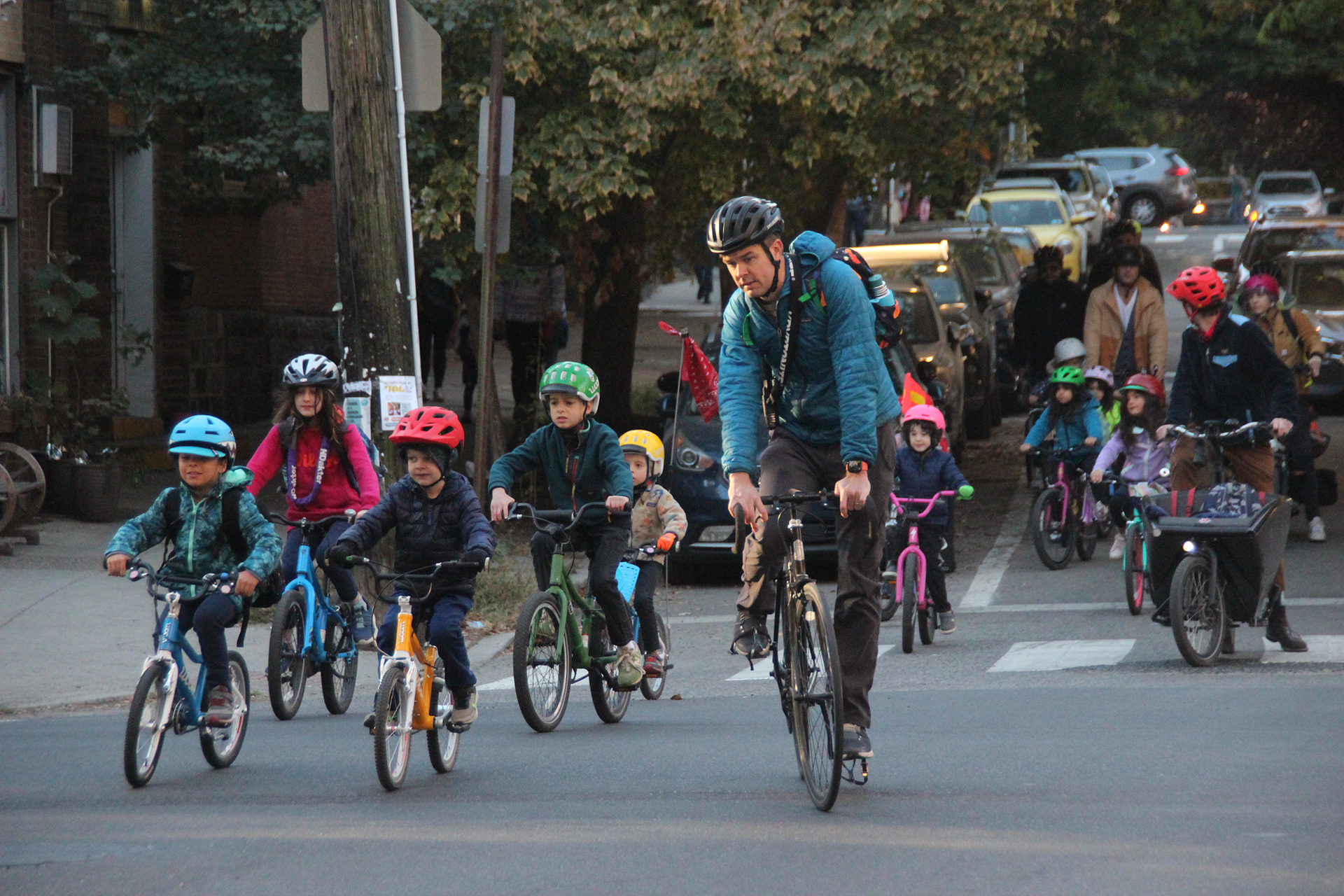
A few decades ago, it would have been fairly common to see students biking to school. In 1969, nearly half of children got to school on foot or by bike. By 2021, that number had dropped to just 11%, the result of increasing car traffic and sprawl. (Only 1% of students bike to school.)
To combat this trend, the first Safe Routes to School (SRTS) program emerged in the 1990s in the Bronx. In 2005, Congress approved $612 million in funding for SRTS programs across the country, which helped build or improve bicycle and pedestrian infrastructure around schools and launch SRTS education campaigns.
In 2013, this funding led to the creation of Philadelphia’s first bike bus at Meredith Elementary School in Queen Village. Carsten Starke, a parent of two children, was one of the original organizers. More than a decade later, he still rides the route with his younger child. “It’s a unique opportunity for them to ride in the street. Usually, they’re condemned to the sidewalks, which are very bumpy and unsafe on their own, and they can’t really keep a steady speed,” he says. “On the street, it’s a completely different experience. It instills in them this fun of just pure bicycle riding.”
The experience is joyful for parents, too, if slightly more stressful. Organizing a bike bus requires a good deal of time and effort — both hard to come by for busy parents. As a result, most of the bike buses in Philadelphia run only semi-regularly. The Meredith bike bus rides for a month in the fall and a month in the spring. Jason Sandman, who got a bike bus started at George W. Nebinger Elementary School in Queen Village this year, intends to follow a similar schedule. “We are two parent volunteers. So we are not signing up yet for a full-time situation,” says Sandman.
Bike bus organizers also have to mitigate the hazards that come with shepherding a group of kids through often-hectic city streets. Organizers of the Meredith bike bus, for instance, assign parents to ride up ahead of the pack to block intersections. In the past, Starke says, a police officer would escort the group.
You get some horns, you get some impatient people once in a while … But when people realize that it’s a bunch of kids riding in the street together, it puts a smile on their face.”
— Jason McCartney, Meredith Elementary bike bus parent
Even with the best precautions in place, however, there’s still unpredictable Philadelphia drivers to contend with. On the day this reporter visited the Penn Alexander bike bus, the group encountered one of them. “There was an aggressive driver that was honking and speeding through. He started yelling at us about taking the whole road,” Ziv says.
According to Jason McCartney, who now leads the Meredith bike bus, such encounters are disconcerting, but they’re the exception rather than the rule. “You get some horns, you get some impatient people every once in a while,” he says. “But when people realize that it’s a bunch of little kids riding in the street together, it puts a little smile on their face.”
According to Peter DeCarolis, the coordinator for Safe Routes Philly, the City’s youth bicycle and pedestrian safety education program, Philadelphia can — and should — have more kids walking and biking to school together.
“We find this negative feedback loop in schools that are not quite set up for walking or biking the way they could be, where it looks dangerous, so you decide to drive your kids, so there’s more cars, so it looks more dangerous, and more parents decide to drive,” DeCarolis says. “So reversing that trend with the bike bus and the walking school buses is a way to make those kids safer as well.”
Bike buses can inherently make the ride to school safer for parents and students, but there’s more that can be done. “There’s two ways to make a street safer for a bike bus. One is to have separated infrastructure where you’re physically separate from the vehicles,” says DeCarolis. “The other is to engineer a street that is calm enough where you minimize the danger of a crash because you’ve taken the speed out of the equation and the volume of cars.”
The City is making progress on both approaches. At the end of 2023, there were 29.8 miles of separated bike lanes in the city, and 4.3 additional miles under construction. The city’s High-Quality Bike Network plan aims for a network of protected bike routes within a quarter-mile of every Philadelphian by 2040. Last year, the City had six Neighborhood Slow Zones — which calm traffic in an entire zone of residential streets — completed or under construction. Six schools in North Philadelphia, meanwhile, received $25 million in federal funds to calm traffic last year.
There is, however, often more demand for such initiatives than there is supply. (There were 33 applications for the Neighborhood Slow Zones program in 2023, for example — an 18% increase from the previous round. Only the top-scoring Slow Zone proposals will become a reality, pending the availability of funding.) And 2023 had a record-high number of pedestrian and cyclist deaths.
Residents of some neighborhoods are finding other ways to make the school commute safer. In Spruce Hill, the Spruce Hill Community Association and the University City District are partnering to add a pedestrian plaza at the intersection of 43rd and Spruce — near Penn Alexander — that will not only slow cars down but also force them to turn more safely. This fall, the City put in speed bumps around the entire perimeter of the school. According to Penn Alexander principal Lauren Overton, barriers will soon be installed to protect bike lanes near the school.
For some parents, the bike bus is a way to help demonstrate the immediate need for safer streets and better infrastructure. It’s also a way to prime the next generation to enjoy that infrastructure in the future, to get them hooked on biking for life.
“If we cultivate a population of active transportation kiddos, if they’re staying healthy and getting fresh air and arriving to school energized and awake and ready to go, that’s a pretty good legacy, I think,” says Sandman.


